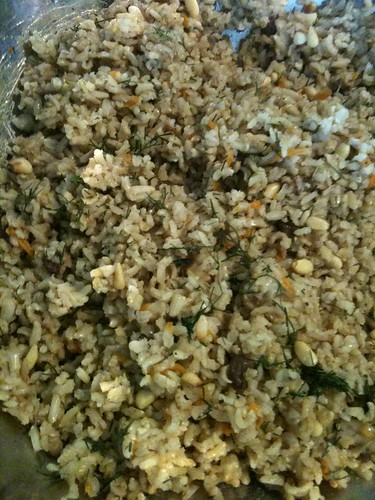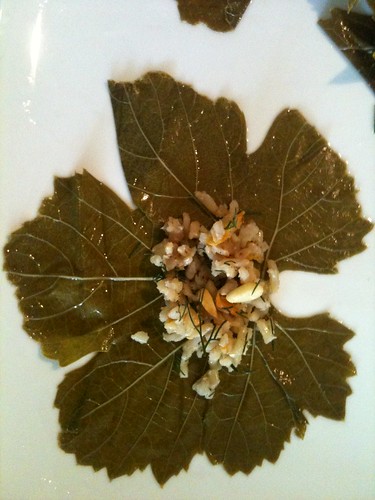Jasmines
 There are so many types of jasmine, and while I haven’t seen many Jasmine grandiflorum or Sambac blooming this spring, a different variety that is totally new to me has captured my nose’s attention. It has a delicate aroma that is lightly peach-like, while being ultimately jasmine.
There are so many types of jasmine, and while I haven’t seen many Jasmine grandiflorum or Sambac blooming this spring, a different variety that is totally new to me has captured my nose’s attention. It has a delicate aroma that is lightly peach-like, while being ultimately jasmine. The yellow jasmine is the least fragrant of all jasmine varieties, and is mostly appreciated for its colour.
The yellow jasmine is the least fragrant of all jasmine varieties, and is mostly appreciated for its colour.
Dead Sea
The mud and the salt of the dead sea has a most peculiar scent from the abundance of minerals bubbling from the springs. Sulfur and salt stand out more than others. One needs to overcome the stench of rotting eggs and decide to become part of the mud and oily water in order to enjoy this peculiar scenery and open your own spa under the sky.
Grape Vine Leaves
 While grapevine leaves do not have a very distinctive scent, they have the most fantastic tangy flavour, and are used for the legendary stuffed grapevine leaves. Everything about making this classic specialty dish is sensual and relaxing. Picking the leaves and arranging them in orderly piles; blanching them in salt water; rolling the fragrant rice, spiked with mint, dill, allspice and pine nuts; their fragrant and quiet simmer in lemon juice and olive oil; and finally, eating the cool and elegant rolled leaves one by one, admiring their exquisitely delicate flavour. A woman who knows how to make these is sure to find a husband quickly. And a man that is patient enough to sit among the chatty women rolling those little pieces of perfections is an unusual sight in this region, but is sure to be the first one to taste the delicious results!
While grapevine leaves do not have a very distinctive scent, they have the most fantastic tangy flavour, and are used for the legendary stuffed grapevine leaves. Everything about making this classic specialty dish is sensual and relaxing. Picking the leaves and arranging them in orderly piles; blanching them in salt water; rolling the fragrant rice, spiked with mint, dill, allspice and pine nuts; their fragrant and quiet simmer in lemon juice and olive oil; and finally, eating the cool and elegant rolled leaves one by one, admiring their exquisitely delicate flavour. A woman who knows how to make these is sure to find a husband quickly. And a man that is patient enough to sit among the chatty women rolling those little pieces of perfections is an unusual sight in this region, but is sure to be the first one to taste the delicious results!If you are up to the task, prepare these a day in advance, as their aroma improved after all the ingredients are in each other presence over night. If you are not fortunate enough to have a grapevine in your yard, you can substitute the leaves with preserved leaves, which are widely found in most Middle Eastern and Greek specialty stores. The pickled leaves are usually more crunchy as they are made of more mature leaves and have more fiber.
For the rice stuffing:

Soak over night or for a few hours:
3 cups long grain brown rice (Basmati or Jasmine are the best)
1 large diced onion
1 Tbs olive oil
1-2 large carrots, grated
2 large bundles of baby dill, finely chopped
1 large bundle of spearmint leaves, finely chopped
1-2 tsp salt
1-2 tsp allspice, ground
1 tsp freshly ground black pepper
1⁄2 cup or more pine nuts, toasted (you may substituted for blanched, chopped and toasted almonds)
A handful of raisins (optional)
6 cups of boiling water
One large lemon
3 Tbs olive oil (or to taste)
1⁄2 cup water
In a large pot, saute the onions in the olive oil until slightly golden. Add the carrots and stir constantly. Strain the rice and add more oil to the pot if needed. Saute the drained rice along with the onions and carrots, for about 5 minutes, while constantly stirring to avoid scorching. Add the raisins and boiling water and cook on high heat until water reaches boil. Reduce to low heat, and let simmer until water is only at the bottom. Turn off the heat, and leave covered for 15-20 minutes, until rice has absorbed all the water.
Toast the pine nuts in a pan, and add the pine nuts and chopped herbs to the rice and mix well. Transfer to a big bowl and wait until it’s cool enough to work with your hands and stuff the leaves.
To prepare the leaves:

Pick as many leaves as you can – 150-200 leaves should be a good start, and if you need more you can pick more later. Pick only the largest of the youngest (which are also the softest) leaves, and keep the stems on (the stems will not be removed until just before stuffing the leaves). One jar of leaves would be enough if you are not picking your own leaves. Arrange the leaves in piles of 10 leaves each, so that you can easily count them.
Boil a pot full of water with one tablespoon salt. Blanch the leaves until they change their colour from bright green to olive (at this point they will look as if they were pickled).
With a small pairing knife, remove the stem of each leaf before stuffing. Place a teaspoon of rice int eh middle of the leaf, and fold the sides of the leaf starting from the top and the sides (next to the stem), and then roll to the bottom. Be sure not to over stuff, in order to achieve an elegant, elongated shape of each stuffed leaf.
Place the leaves in a pot, arrange them in circles and layers, and make sure they are sitting tight and close to each other. Add 1⁄2 cup water, lemon juice of one large lemon and three tablespoons of olive oil. Place a ceramic plate large enough to cover the leaves but small enough to fit into the pot (as to keep the leaves and place so that they don’t open during the cooking). Simmer in low heat for 30-45 minutes, until all the water is evaporated. If there is an excess of water after 45 minutes, gently pour it out.
Wait until the leaves cooled a bit, transfer into trays and serving plate and enjoy!
These can be served warm or cold, and are an excellent appetizer, but can also make a main dish – especially if you make a huge amount of stuffing and prepare other vegetables. My favourites stuffed vegetables are cabbage leaves, onions, tomatoes, peppers and zucchinis. I prefer to serve them with tomato sauce, and bake them in the oven with the sauce, or with olive oil and than pour the sauce over just before serving.

Green Almonds

Spring is the season of green almonds. While the shells are not yet hard and dry, and the nut (the actual almond – the “seed”) is not yet ripe. The whole fruit is eaten as is, or with salt. Are you surprised to find out that it is sour? Wait until you reach the interior of this peculiar fruit – the almond is soft and jelly like, and has a very peculiar yet delicate texture and flavour. I am yet get converted to eating almonds at this state, despite the fact that my family adores them (I got a good example of watching my parents eat them as a child, as if it was the most delicious thing in the world). I prefer to wait until May, when the peel is still green, but the interior almonds have started to ripen. The almonds inside are by than crunchy and slippery white. Or better yet, wait until June, when the almond actually start tasting like almond – milky yet not as dry is the almond nuts, much like fresh blanched almonds. Yum!
(At this point the green outer peel starts to peel off and the a soft white shell starts to develop).






